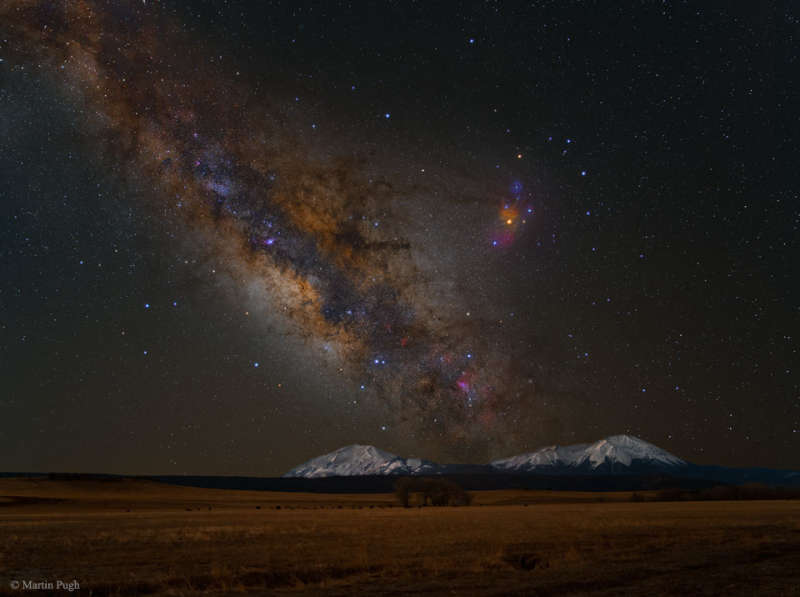Credit & Copyright: Martin Pugh;
Rollover Annotation: Judy Schmidt
Explanation:
That's not lightning, and it did not strike between those mountains.
The diagonal band is actually the central band of our Milky Way Galaxy, while the
twin peaks are actually called the
Spanish Peaks -- but located in
Colorado,
USA.
Although each
Spanish peak
is composed of a slightly different type of rock, both are approximately
25 million years old.
This serene yet spirited image composite was
meticulously created by merging a series of images all taken from the same location
on one night and early last month.
In the first series of exposures, the background sky was built up, with great detail
being revealed in the
Milky Way dust lanes as well as the
large colorful region
surrounding the star
Rho Ophiuchus just right of center.
One sky image, though, was taken using a
fogging
filter
so that brighter stars would appear more spread out and so more prominent.
As a bonus, the planets
Mars and
Saturn
are placed right above peaks and make an orange triangle with the bright star
Antares.
Later that night, after the moonrise, the Moon itself
naturally illuminated the snow covered mountain tops.
1999 2000 2001 2002 2003 2004 2005 2006 2007 2008 2009 2010 2011 2012 2013 2014 2015 2016 2017 2018 2019 2020 2021 2022 2023 2024 2025 |
Yanvar' Fevral' Mart Aprel' Mai Iyun' Iyul' Avgust Sentyabr' Oktyabr' Noyabr' Dekabr' |
NASA Web Site Statements, Warnings, and Disclaimers
NASA Official: Jay Norris. Specific rights apply.
A service of: LHEA at NASA / GSFC
& Michigan Tech. U.
|
Publikacii s klyuchevymi slovami:
Milky Way - Mlechnyi Put'
Publikacii so slovami: Milky Way - Mlechnyi Put' | |
Sm. takzhe:
Vse publikacii na tu zhe temu >> | |
